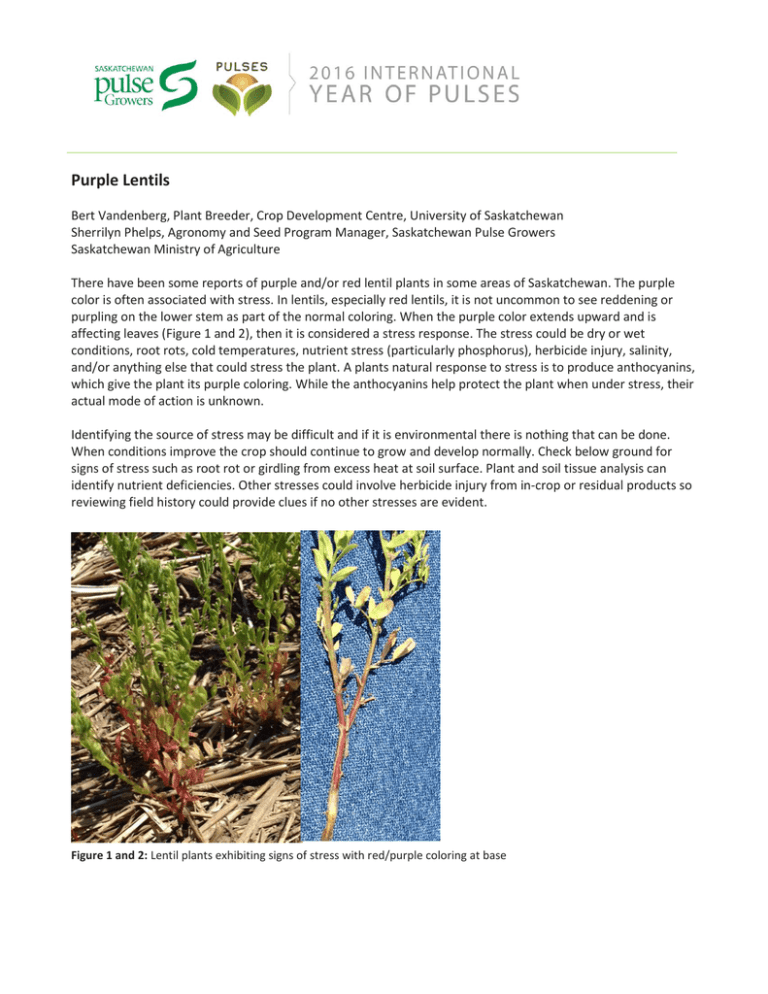Purple Lentils - Saskatchewan Pulse Growers
advertisement

Purple Lentils Bert Vandenberg, Plant Breeder, Crop Development Centre, University of Saskatchewan Sherrilyn Phelps, Agronomy and Seed Program Manager, Saskatchewan Pulse Growers Saskatchewan Ministry of Agriculture There have been some reports of purple and/or red lentil plants in some areas of Saskatchewan. The purple color is often associated with stress. In lentils, especially red lentils, it is not uncommon to see reddening or purpling on the lower stem as part of the normal coloring. When the purple color extends upward and is affecting leaves (Figure 1 and 2), then it is considered a stress response. The stress could be dry or wet conditions, root rots, cold temperatures, nutrient stress (particularly phosphorus), herbicide injury, salinity, and/or anything else that could stress the plant. A plants natural response to stress is to produce anthocyanins, which give the plant its purple coloring. While the anthocyanins help protect the plant when under stress, their actual mode of action is unknown. Identifying the source of stress may be difficult and if it is environmental there is nothing that can be done. When conditions improve the crop should continue to grow and develop normally. Check below ground for signs of stress such as root rot or girdling from excess heat at soil surface. Plant and soil tissue analysis can identify nutrient deficiencies. Other stresses could involve herbicide injury from in-crop or residual products so reviewing field history could provide clues if no other stresses are evident. Figure 1 and 2: Lentil plants exhibiting signs of stress with red/purple coloring at base



